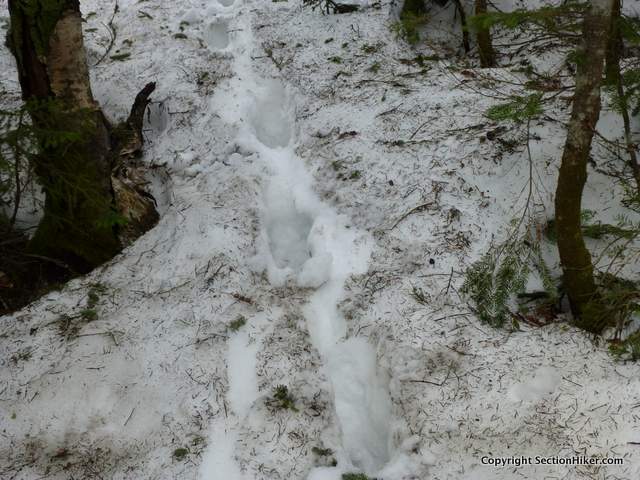What’s the proper footwear for spring mountaineering: winter mountaineering boots or path runners? When can you turn between the 2? There’s a level the place avoiding frostbite trumps light-weight footwear, and carrying insulated boots nonetheless is sensible.
Figuring out when to decide on between them requires understanding:
- The place is the snow in your meant route?
- How deep will it’s?
- What’s the snow consistency like?
- How lengthy do it’s worthwhile to hike or snowshoe by way of it?
- What is going to the air temperature be (at elevation)?
Learn how to Resolve
Air Temperature: How heat or chilly is the air temperature? Strolling in ice water in heat sunny climate is so much much less taxing in your physique than doing it in chilly, moist climate. How critical is the hypothermia threat going to be?
Map the snow line: Begin by mapping your route and looking out on the elevation profile (instruments like Caltopo.com are useful for this). In the event you monitor climate forecasts, avalanche forecasts, and regional journey studies (together with historic journey studies) over a 1-2 month window earlier than your journey, you possibly can develop a reasonably good psychological mannequin of the place the snow line is week-to-week and the elevation the place you’re prone to hit snow. Larger elevations usually retain snow longer in spring than valley elevations, so attempt to discover out from an area supply the place the snow line is. This may affect the route you select and whether or not to defer your journey.

Photo voltaic Heating: How a lot daylight does your route obtain? How a lot forest cowl does it have? What different microclimate variables may restrict the speed of snowmelt? For instance, sun-sheltered areas like ravines or cols usually tend to retain snow longer.
Floor Situations: How a lot mountaineering visitors has your route obtained over the winter? Standard routes usually develop a monorail layer of ice that persists longer than surrounding areas, whereas much less fashionable routes soften off rapidly. Microspikes can present ample traction to hike monorail till it turns the consistency of mashed potatoes. After that, there’s nearly no approach to keep away from postholing, even when carrying snow footwear.

Spring Footwear Methods
My spring mountaineering footwear might be grouped into three classes: winter footwear, three-season footwear, and hedges between the 2. The hedges are useful while you wish to hike in three-season footwear by way of restricted areas with winter circumstances.
- Winter fashion boots, traction, and flotation
- Three-season footwear and traction
- Insulation Hedges between the 2 extremes
The hedges between the 2 extremes are essentially the most fascinating as a result of they supply a light-weight approach to prolong the vary of my path runners to allow them to be worn when floor circumstances are borderline winter.
- The oven-roasting baggage are worn over my wool socks inside my path runners. They work so much like waterproof, insulated boots however with much less insulation. You sweat a bit in them (see vapor barrier socks) however chilly water doesn’t repeatedly soak your socks and flush away all of the retained warmth. Some great benefits of this technique are it’s gentle weight and that it doesn’t require a larger-sized shoe. Nevertheless it solely gives a reasonable insulation profit when carrying mesh path runners.
- I’ve additionally had success utilizing Sealskinz waterproof insulated socks, which additionally match inside my path footwear with out requiring a larger-sized shoe. They’re worn over my toes like common socks however lined with fleece inside a water-resistant membrane. You sweat a bit in them, they require mild washing, and so they take a very long time to dry. On the flip facet, they’re a wonderful hedge that makes it doable to hike in path runners, even when prolonged post-holing is required. They usually solely weigh twice as a lot as an additional pair of socks.
What’s your mountaineering footwear technique for “spring circumstances.”
SectionHiker by no means accepts fee for gear evaluations or editorial protection. If you purchase by way of affiliate hyperlinks on our web site, we might earn a small fee at no further price to you. Assist us proceed to check and write unsponsored and impartial gear evaluations, mountaineering and backpacking FAQs, and free mountaineering guides.